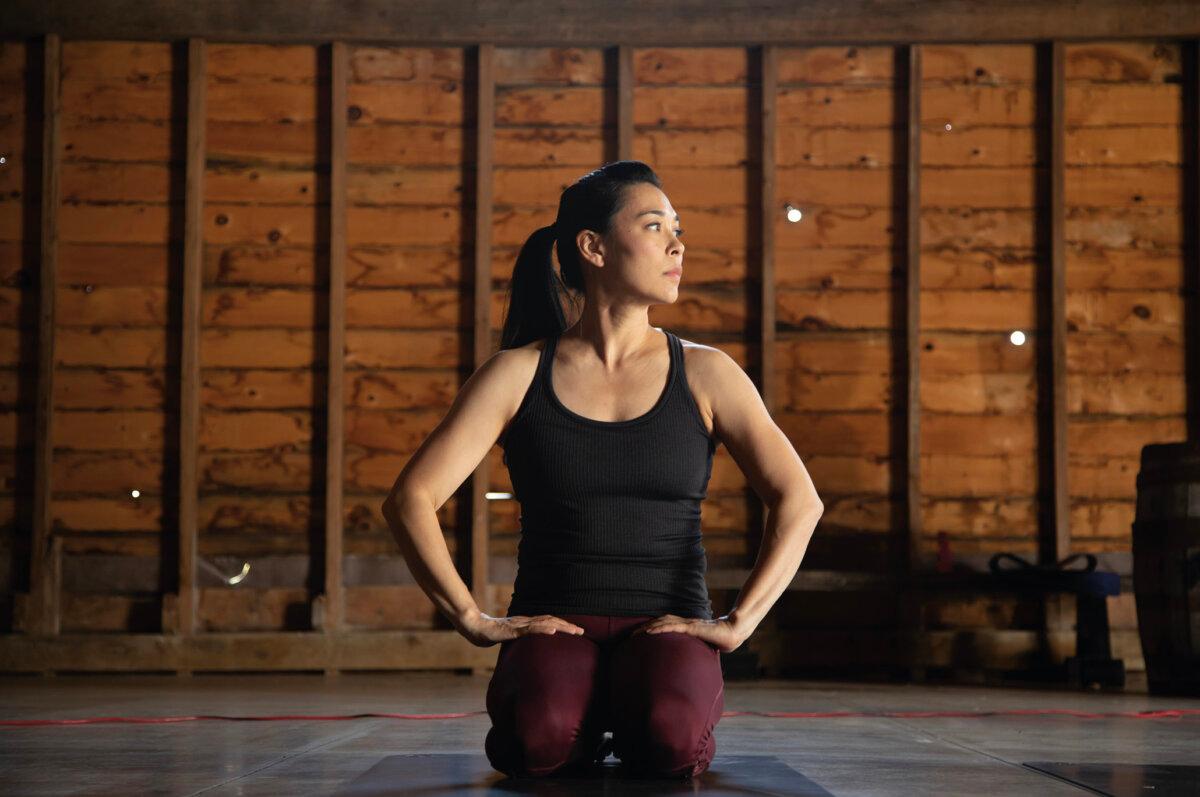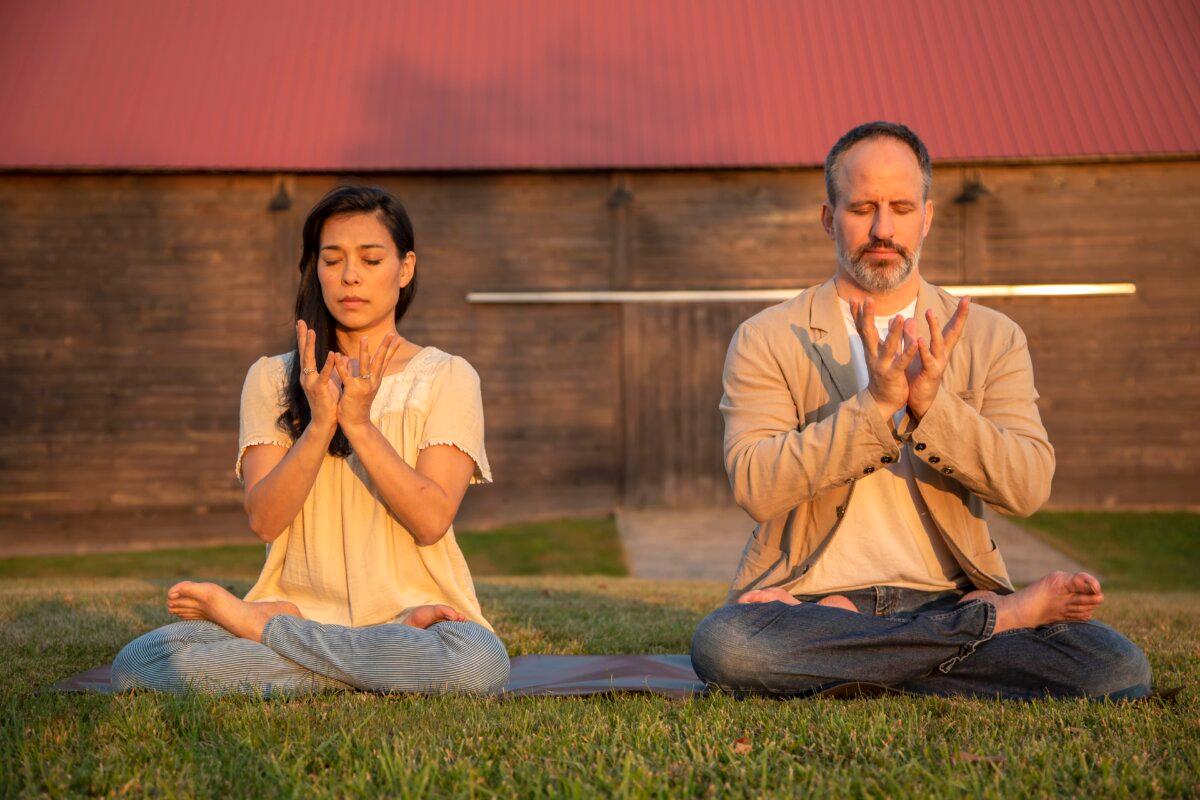If a fit body was easy to obtain, everyone would have one. But so many obstacles get in our way. We may lack the time and energy to follow through (or keep it up). We may also be chronically stressed out, and have developed a habit of eating primarily for comfort.
Holistic fitness coach Tysan Lerner understands these obstacles well.
Much of Mrs. Lerner’s philosophy stems from the ups and downs she’s experienced with her own body. Her first profession, ballet, caused many injuries and forced her to stay thin, and when she left the dance field in her early 20s, she gained a lot of weight really fast. Her once slender five-foot-four frame suddenly took on another 40 pounds.
“It was very depressing for me; I had such low self-esteem,” Mrs. Lerner said. With her weight came high cholesterol, poor skin, and what felt like chronic fatigue. “I would try to go on this diet or that diet, and I never could stick to it for very long. I felt like I had a really weak mind, like I was a total failure. It was very demoralizing.”
In the end, she encourages people to train in a way that feels good for sustainable change and a more balanced life.
Set Realistic Expectations
So how do you turn your weight-loss dreams into tangible results? The first step is to “be really honest with yourself” about what you’re willing to sacrifice and what you can reasonably do. Mrs. Lerner added, “And also, just know that sometimes, when you start something new, it’s hard in the beginning, but it ends up feeling so good that you you don’t know you lived without that thing. Exercise is a perfect example of that.”Manage Your Stress Response
Diet and exercise are the two main ways people tackle weight loss, but Mrs. Lerner highlights the importance of first addressing an underlying factor: stress.Stress can make weight loss more difficult by elevating levels of the hormone cortisol, which prompts your body to protect itself by slowing down your metabolism and holding weight around your middle. Many of us cope with stress by turning to our favorite foods for comfort, compounding the problem.
It’s not always possible to avoid external stress. But according to Mrs. Lerner, “it’s less about how much stress you have in your life, and more about how you perceive and handle the stress.” Finding a new strategy can make a big difference. “Sometimes a person can drop the weight naturally because they just change this one bad habit.”

Acknowledge Your Emotions
When cravings crop up, Mrs. Lerner suggests checking in with yourself emotionally. Examine if you’re actually hungry, or just seeking comfort. If it’s the latter, “recognize that, but don’t put yourself down for it,” she said. Then you’ll have more awareness of what you truly need.
“Am I going to be soothed by the ribs and French fries? Or is there something else I could do that I can soothe myself with while still sticking to my diet plan?”
Talking yourself through this process takes practice. But with time you can learn to recognize and meet your needs in a healthier and more nurturing way.
Change Your Breathing
To help immediately lower stress on a physiological level, Mrs. Lerner suggests two breathing techniques:
- Take one long inhalation through your nose and end with a short sniff. Relax and exhale. Repeat. “This breath makes me think of when a child is crying, as they’re coming to the end of their tantrum. They’re calming down. They’re finding their equilibrium again,” Mrs. Lerner said.
- Try box breathing, a technique used by Navy SEALs, where you picture a box in front of you to guide your breathing. Starting at the bottom left corner, “inhale for four counts, and in your mind’s eye, draw a line up as you inhale. Hold your breath for another four counts while drawing a line at the top of the box. Exhale down the right side for four counts, and then hold your breath again across the bottom line for four counts. Do that for as long as you need to until you feel your nervous system regulating yourself.”
Develop Mental Grit
To build resilience against stress on a deeper level, Mrs. Lerner encourages people to find their sense of purpose.
“It doesn’t have to be a saving-the-world kind of purpose. It can be as simple as being a parent and your purpose is to raise your children, and so you do a good job,” she said. “If you’re clear on that point, you’re going to get wisdom from that. … I think that when people start to shift their focus of doing something for a greater reason, for the benefit of others, it puts a fire under them.”
Listen to Your Body
During her dance career, Mrs. Lerner constantly dieted to stay slim, counting carbs and calories. That strategy worked for a while, but had a greater cost. “I didn’t know my fullness point. I didn’t know my hunger point. It disconnected me from my body, and I no longer knew how to eat,” she said. “The first thing I had to learn was how to honor my hunger and fullness.”Eat Until You’re 80 Percent Full
This piece of body listening advice comes from the ancient Chinese philosopher, Confucius. Practice eating until you’re satisfied, but not full. “That was the first baby step I took, and I lost over 40 pounds,” Mrs. Lerner said.
She recommends taking at least 20 minutes to eat a meal (consider setting a timer if you’re a fast eater). If you have food left on your plate when you’re satisfied, save it for later. If you’re eating out, see if you can be satisfied with half of the serving size. “If not, then fine. Finish it. But slow down, and pay attention to that,” she said.
Don’t Trust Sugar
Mrs. Lerner found that sugar shuts off the body’s fullness messages, because your body is never satisfied. Instead of turning to sugar to satisfy your hunger, “eat whole, clean foods so that you’re not setting yourself up for lots of cravings,” she said, and “have protein and some fat in every meal.”
Get Enough Protein
Mrs. Lerner recommends adults have at least 30 grams of protein in their first meal. “Know what that looks like, because that’s going to give you the best chance to absorb that protein and turn it into muscle.”
Stay Hydrated
Are you really hungry, or just thirsty? Staying well-hydrated makes you most capable of correctly interpreting your body’s messages.

Take Fitness Step by Step
For weight loss, nutrition is most important, but movement takes a pivotal supporting role. Exercise can optimize your metabolism by building lean muscle mass.But building this valuable muscle takes time and a sustainable strategy. Too often, people push themselves into strenuous activities long before their bodies are ready to handle them. “They hurt themselves … [and] they think, ‘I’m too old for that.’ And it’s just because they skipped the foundation level,” Mrs. Lerner said.
Alignment
This element involves training to correct any misaligned parts of the body, such as poor posture, pronated feet, tight shoulders, or an odd pelvic tilt. “We work on releasing tight muscles; … getting some blood flow through them; opening up their chest, shoulders, neck; and teaching them how to improve their alignment,” Mrs. Lerner said.
Stability
To understand true stability, which is not the same as stiffness, think of a tree, Mrs. Lerner explained: “If the tree is too stiff, the wind will just knock it over. A healthy tree has that give. It’s the same thing for your stability.” This element involves activating deep core stabilizing muscles in and around your joints, spine, pelvis, and feet.
Strength
With an aligned and stable body, you’re ready to start lifting some weight and building bigger muscles. While it’s tempting to jump straight into strength training, Mrs. Lerner warns that introducing this element too soon, without the support of those stabilizing muscles, can damage joints.
Coordination
“What if you want to go out dancing, or what if you have a grandchild who comes over and plays?” Mrs. Lerner said. Coordination is the next element to train, harnessing your new strength and stability to confidently move in more elaborate, challenging patterns.
Power
Adding power, which “is essentially speed,” said Mrs. Lerner, is the final element. But the training doesn’t end there. Too much speed, for example, may throw off alignment. The goal going forward is to keep all these elements in mind and in balance.
“It is helping people get stronger than they imagined they’d ever be,” Mrs. Lerner said.

Celebrate Your Wins
Training focuses on the physical body, but Mrs. Lerner says that a positive mindset keeps you moving forward.“People have to get over beating themselves up, because that’s the very thing that will get in a person’s way. They start to feel hopeless, so it’s hard to keep that momentum going,” she said.
My Daily Routine
Mrs. Lerner starts each day with meditation. She practices Falun Gong—an ancient Chinese spiritual discipline based on the principles of truthfulness, compassion, and forbearance—which includes slow, meditative exercises and a seated meditation. ”It uplifts our hearts and our minds. It’s been very wonderful for my whole family,” she said.After her children go off to school, and before she goes to work, Mrs. Lerner and her husband go for a two-and-a-half-mile walk outside. “We want to make sure we’re getting sunlight and fresh air, and walking is very healing for the body.”
In the evening, a couple times a week, Mrs. Lerner trains to maintain the integrity of her joints. Her goal is to have enough stability to support her new hobby: classical Chinese dance.
She highly recommends getting a hobby. “I didn’t realize how thirsty I was for something so fun,” she said. Unlike her career in ballet, there’s no pressure for her to be thin or to perform well. She does it for sheer enjoyment.
“It has made my body feel amazing,“ she said. ”Chinese dance makes you so much more mobile and flexible, and, yet, you need a lot of strength and a lot of coordination to do it. And for me, as a woman, all the dances teach the inner quality of the ancient, traditional Chinese woman. She’s strong and graceful, yet so soft and gentle.
“It’s changing who I am. I love it.”
People might imagine a fitness coach grinding away at a grueling exercise routine, but Mrs. Lerner seeks movement that brings her joy and grace. She encourages her clients to do the same.
“The exercises that I do in the gym, I’m using to support what I want to do in my life. I want to dance. I don’t want to be hurt.”








